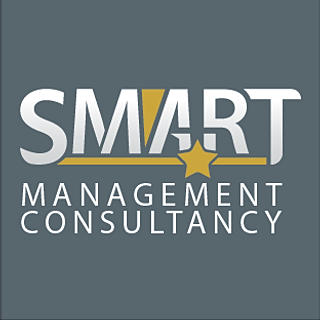Essential Strategies for Effective Risk Management
- Smart Management Consultancy
- Sep 22
- 3 min read
Risk management is a critical aspect of any successful organization. It involves identifying, assessing, and prioritizing risks to minimize their impact on business operations. Effective risk management helps companies avoid costly disruptions, protect assets, and ensure long-term sustainability. This article explores essential strategies for effective risk management tips that can be applied across various industries and business sizes.
Understanding the Importance of Effective Risk Management Tips
Effective risk management is not just about avoiding risks but managing them in a way that aligns with your business goals. It enables organizations to make informed decisions, allocate resources wisely, and maintain a competitive edge. Without a solid risk management framework, businesses may face unexpected losses, legal issues, or reputational damage.
To implement effective risk management, companies should start by establishing a risk-aware culture. This means encouraging open communication about potential risks at all levels of the organization. Employees should feel empowered to report concerns without fear of reprisal. Additionally, leadership must demonstrate commitment by integrating risk management into strategic planning and daily operations.
A practical example is a manufacturing company that regularly conducts safety audits and employee training sessions. These activities help identify hazards early and reduce workplace accidents, ultimately saving costs and improving productivity.

Key Components of Effective Risk Management Tips
To build a robust risk management system, focus on these key components:
Risk Identification
Begin by identifying all possible risks that could affect your business. These can be financial, operational, strategic, or compliance-related. Use tools like SWOT analysis, brainstorming sessions, and historical data review to uncover risks.
Risk Assessment
Once risks are identified, assess their likelihood and potential impact. This helps prioritize which risks need immediate attention. Techniques such as risk matrices and scoring systems are useful here.
Risk Mitigation
Develop strategies to reduce or eliminate risks. This could involve implementing new policies, investing in technology, or transferring risk through insurance.
Monitoring and Review
Risk management is an ongoing process. Continuously monitor risk factors and review your strategies to ensure they remain effective. Use key risk indicators (KRIs) to track changes.
Communication and Reporting
Keep stakeholders informed about risk status and management efforts. Transparent reporting builds trust and supports better decision-making.
By following these components, businesses can create a dynamic risk management framework that adapts to changing environments.

What are the 7 Types of Risk Management?
Understanding the different types of risk management helps organizations address specific challenges effectively. The seven main types include:
Strategic Risk Management
Focuses on risks that affect long-term goals and business direction. For example, market competition or changes in consumer preferences.
Compliance Risk Management
Ensures adherence to laws, regulations, and industry standards. Non-compliance can lead to fines and legal penalties.
Financial Risk Management
Deals with risks related to financial loss, such as credit risk, liquidity risk, and market fluctuations.
Operational Risk Management
Addresses risks arising from internal processes, systems, or human errors. Examples include equipment failure or supply chain disruptions.
Reputational Risk Management
Protects the company’s public image and brand value. Negative publicity or social media backlash are common concerns.
Cyber Risk Management
Focuses on protecting digital assets from cyberattacks, data breaches, and IT system failures.
Environmental Risk Management
Involves managing risks related to environmental factors like natural disasters, pollution, and sustainability issues.
Each type requires tailored strategies and expertise. For instance, cyber risk management might involve investing in advanced cybersecurity tools, while compliance risk management requires regular audits and staff training.

Practical Steps to Implement Effective Risk Management
Implementing risk management strategies can seem daunting, but breaking it down into actionable steps makes it manageable:
Establish a Risk Management Team
Assign dedicated personnel or form a committee responsible for overseeing risk management activities.
Develop a Risk Management Policy
Create a clear document outlining the organization’s approach, roles, and responsibilities related to risk.
Use Technology and Tools
Leverage software solutions for risk assessment, monitoring, and reporting to improve accuracy and efficiency.
Train Employees
Conduct regular training sessions to raise awareness and build skills in identifying and managing risks.
Engage External Experts
Sometimes, consulting with specialists or using professional risk management services can provide valuable insights and support.
Review and Update Regularly
Risk landscapes evolve, so it’s essential to revisit your risk management plan periodically and adjust as needed.
By following these steps, organizations can create a proactive risk management culture that minimizes surprises and maximizes resilience.
Building a Risk-Resilient Future
Effective risk management is a continuous journey, not a one-time task. Organizations that invest in strong risk management frameworks are better positioned to navigate uncertainties and seize opportunities. By understanding the types of risks, implementing practical strategies, and fostering a risk-aware culture, businesses can protect their assets and ensure sustainable growth.
Remember, risk management is not about eliminating all risks but managing them intelligently. With the right approach, risks can become opportunities for innovation and improvement.
















Comments